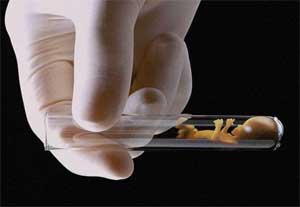- Home
- Editorial
- News
- Practice Guidelines
- Anesthesiology Guidelines
- Cancer Guidelines
- Cardiac Sciences Guidelines
- Critical Care Guidelines
- Dentistry Guidelines
- Dermatology Guidelines
- Diabetes and Endo Guidelines
- Diagnostics Guidelines
- ENT Guidelines
- Featured Practice Guidelines
- Gastroenterology Guidelines
- Geriatrics Guidelines
- Medicine Guidelines
- Nephrology Guidelines
- Neurosciences Guidelines
- Obs and Gynae Guidelines
- Ophthalmology Guidelines
- Orthopaedics Guidelines
- Paediatrics Guidelines
- Psychiatry Guidelines
- Pulmonology Guidelines
- Radiology Guidelines
- Surgery Guidelines
- Urology Guidelines
IVF children at increased risk of high BP in their teenage years: JACC

Children born with the help of assisted reproductive technologies (ART) are at increased risk of developing arterial hypertension in their formative years, according to a new study published in the Journal of the American College of Cardiology.
Assisted reproductive technologies, developed in 1978, has helped millions of individuals and families who are not able to conceive naturally. The most commonly used ART methods are intracytoplasmic sperm injection and in vitro fertilization (IVF), which can expose the embryo and gamete to a variety of environmental factors before implantation.
Emrush Rexhaj, director of Arterial Hypertension and Altitude Medicine at Inselspital, University Hospital in Bern, Switzerland, and colleagues hypothesized that vascular alterations persist in adolescents and young adults conceived by ART and that arterial hypertension possibly represents the first detectable clinically relevant endpoint in this group.
For the study, the research team assessed the circulatory system of 54 young, healthy ART adolescents (mean age 16) by measuring ambulatory blood pressure, as well as plaque build-up, blood vessel function and artery stiffness. Body mass index, birth weight, gestational age, and maternal BMI, smoking status, and cardiovascular risk profile were similar between the ART adolescents and 43 age- and sex-matched control participants.
Also Read: Boys born through IVF have low sperm counts: Study
Key Findings:
- Through 24-hour ambulatory blood pressure monitoring, researchers discovered that ART adolescents had both a higher systolic and diastolic blood pressure than the control participants of natural conception at 119/71 mmHg versus 115/69, respectively.
- Eight of the ART adolescents reached the criteria for the diagnosis of arterial hypertension (over 130/80 mmHg) whereas only one of the control participants met the criteria.
"The increased prevalence of arterial hypertension in ART participants is what is most concerning," said Rexhaj. "There is growing evidence that ART alters the blood vessels in children, but the long-term consequences were not known. We now know that this places ART children at six times higher rate of hypertension than children conceived naturally."
The authors had also studied these participants five years before this study and found that the arterial blood pressure between ART and control children was not different.
"It only took five years for differences in arterial blood pressure to show," Rexhaj said. "This is a rapidly growing population and apparently healthy children are showing serious signs of concern for early cardiovascular risk, especially when it comes to arterial hypertension."
In an accompanying editorial, Larry A. Weinrauch, MD, cardiologist, Mount Auburn Hospital, said that the study's small cohort may understate the importance of this problem for ART adolescents, especially since multiple birth pregnancies and maternal risk factors (such as eclampsia, chronic hypertension, and diabetes) were excluded from the study.
"Early study, detection, and treatment of ART-conceived individuals may be the appropriate course of preventative action," Weinrauch said. "We need to be vigilant in the development of elevated blood pressure among children conceived through ART to implement early lifestyle-based modifications and, if necessary, pharmacotherapy."
"ART-induced premature vascular aging persists in apparently healthy adolescents and young adults without any other detectable classical cardiovascular risk factors and progresses to arterial hypertension," concluded the study authors.
For further reference log on to https://doi.org/10.1016/j.jacc.2018.06.060

Disclaimer: This site is primarily intended for healthcare professionals. Any content/information on this website does not replace the advice of medical and/or health professionals and should not be construed as medical/diagnostic advice/endorsement or prescription. Use of this site is subject to our terms of use, privacy policy, advertisement policy. © 2020 Minerva Medical Treatment Pvt Ltd